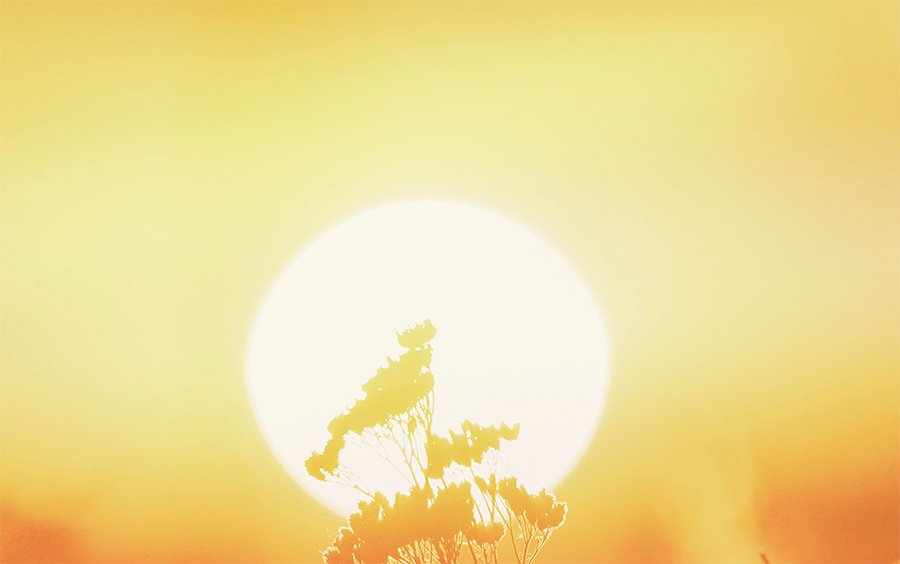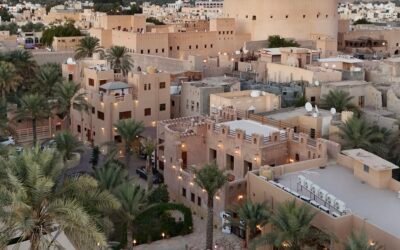Oman Among the Hottest Places on Earth — What Does It Mean for Us?
According to real-time data from Eldorado Weather, Oman has recorded one of the highest temperatures on Earth in the past 24 hours—placing the Sultanate once again on the global climate map. This time, not because of a storm or flash flood, but due to an unrelenting wave of extreme heat.
As temperatures soared above 47°C, Oman joined a short list of countries—mostly in the Gulf and Central Asia—experiencing the most intense heat on the planet. For some, this might seem like a distant statistic. But for the people who live here, work outdoors, and navigate life under this blazing sun, it’s a very personal experience.
A Scorching Spotlight
The data doesn’t lie: Oman is hot. Historically hot.
Reports from weather-tracking platforms showed multiple cities across the Sultanate pushing toward the top of the global temperature charts. Al Suwaiq, Qurayyat, Joba, and parts of Al Batinah and Dhahirah witnessed some of the highest recorded temperatures this week—matching or even exceeding long-standing heat records.
This is not an isolated event. Over the last few years, Oman has repeatedly found itself on the list of the world’s hottest places. In June 2018, Qurayyat recorded a night where temperatures never dropped below 42.6°C—the hottest minimum temperature ever recorded globally at the time.
Why Is This Happening?
There are several reasons behind Oman’s rising temperatures—and while some are natural, others are deeply connected to global environmental changes:
- Geographical Reality: Oman is part of one of the world’s most sun-exposed regions, positioned between the Arabian Desert and the Gulf of Oman.
- Climate Change: The MENA region is warming at twice the global average, making Oman’s summers progressively hotter.
- Meteorological Factors: Seasonal wind shifts, low-pressure zones, and monsoon systems influence local heat intensities.
It’s Not Just About the Numbers—It’s About the People
Let’s pause the data and talk about the human side of heat.
Imagine:
- A delivery worker navigating traffic in 48°C heat.
- A construction crew pouring concrete under a blazing sky.
- An elderly couple struggling with an old air conditioning unit.
- A date farmer in the interior tending to wilting palms.
These aren’t abstract examples. These are real lives lived every day in Oman’s harsh summer climate.
What Can We Do?
Extreme heat is more than uncomfortable—it’s dangerous. Here’s how we can stay safe and adapt smarter:
Individual Actions:
- Drink water regularly—even if you’re not thirsty.
- Wear light, breathable clothing and head coverings.
- Avoid outdoor activity between 11:00 AM and 3:00 PM.
- Use shaded walkways and cool interiors.
- Check on vulnerable individuals around you.
Community Solutions:
- Incorporate green roofs and walls in buildings.
- Develop cooling shelters and shaded public spaces.
- Promote tree planting and green corridors in cities.
- Implement heat education programs in schools and communities.
Oman’s Climate Resilience in Action
Omanis have always found ways to thrive in tough climates. From ancient falaj irrigation systems to shaded architecture and wind towers, the past holds many answers for the future.
Today, that wisdom is evolving through:
- Solar-powered cooling innovations
- Eco-friendly building regulations
- Urban sustainability projects led by municipalities
- Climate-focused startups working on smart heat solutions
What This Means for Oman’s Future
Oman’s recurring presence in global heat rankings is not just a weather anomaly—it’s a signal. One that tells us to act:
- Reduce emissions through renewable energy and policy
- Preserve and expand green spaces
- Engage youth in climate awareness and innovation
We must see sustainability not as a short-term campaign but as a cultural and national priority.
A Final Word
The desert has always been part of who we are. But this scale of heat—this frequency and intensity—tells us something more.
It tells us to listen.
To adapt smarter.
To care deeper.
To act together.
This isn’t just about breaking records.
It’s about protecting the people, the land, and the future we call home.
Hassan Al Maqbali
Content Creator & Website Manager at Omanspire
Hassan Al Maqbali is a dedicated content creator and the website manager at Omanspire, where he writes passionately about Oman's culture, history, and the timeless stories that shape the nation’s identity. His work reflects a deep love for the Sultanate and a commitment to sharing its beauty with the world.
Driven by a desire to widen global understanding of Oman, Hassan creates narratives that present the country through diverse perspectives—capturing its people, heritage, landscapes, and evolving cultural heartbeat. Through Omanspire, he hopes to bring readers closer to the spirit of Oman, one story at a time.




